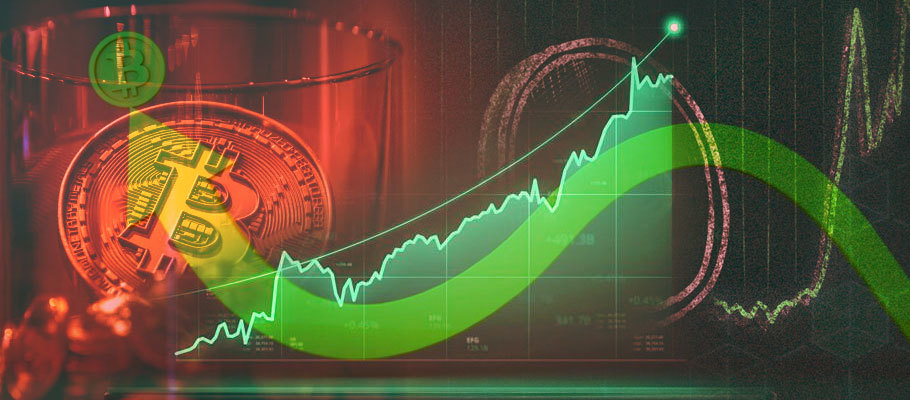
Published: March 30th, 2022
After a storming start to the week, Bitcoin has clawed back the losses suffered since the beginning of 2022.
In the first 30 days of the year, the price of BTC price sank from USD 47,732.70 to USD 35,069.30 and struggled to regain lost ground. In recent weeks, however, the catalysts for an upward surge have been building.
Last week (wc 21st March), US Treasury Secretary Janet Yellen told the Wall Street Journal that she had 'still felt some skepticism’ about cryptocurrencies, but also said she believed innovations to the payment system could be potentially healthy. Given her long track record of anti-crypto commentary, markets reacted to her more measured tone as a sign that something has changed.
BTC also passed an important milestone when the effects of compounding on its price meant the asset had moved out of the red for the year-to-date.
Analysts believe BTC’s steady gains in Q1 might be a sign that the spike of FUD (fear, uncertainty and doubt) brought on by Russia’s invasion of Ukraine and the COVID pandemic are starting to fade.
Some of the impact can be seen in the DeFi market, where recent comments by Terraform Labs CEO Do Kwon indicate growing BTC bullishness. Kwan told Bloomberg that he now intends to buy billions more Bitcoin to fund Terra’s official wallet and provide further backing for the TerraUSD (UST) stablecoin.
Of course, that statement of intent hasn’t happened just yet. At time of writing the balance held in the Terra wallet sat at USD 1.3 billion. This was shortly after Kwon said that Terra had raised a total of USD three billion to seed its reserve and aimed to raise USD ten 10 billion in total.
Despite the upward price action, analysts at blockchain data firm Covalent said it’s too early to celebrate an end to BTC’s price rollercoaster. They say the turbulence won’t end until BTC's price has held its current gains for at least a fortnight.
‘Most of Bitcoin’s recent gains have been influenced by overall macro market sentiment, particulalry around equities. Other factors making an impact are whales and large derivative positions driven by high-volume trading.’
While Bitcoin is increasingly seen as a safe haven asset, where investors can park their money when mainstream markets turn negative or volatile, it has more or less tracked to traditional markets since stocks crashed during the pandemic.
‘Correlation between BTC and the S&P 500 index actually reached an 18-month high last week, Covalent added.
The price of Bitcoin and Ethereum spiked on Sunday 27th March and punched through resistance as the entire crypto market headed higher. Figures from CoinMarketCap showed Bitcoin’s price rose by more than five per cent in 24 hours to USD 47,018, while Ethereum also shot up five per cent to USD 3,290.
Cumulatively, Bitcoin is up 14 per cent in the last seven days and Ethereum is up 15 per cent.
Other top coins experienced a similar one-day lift ahead of Monday’s session. Polkadot (DOT) was up seven per cent on Sunday and Solana (SOL) was up five per cent. XRP rose by three per cent and Cardano (ADA) shot up by three per cent.
The cause of the rebound wasn’t immediately clear. Looking at the events of the current week (wc 28th March) it's fair to say external factors were starting to make their presence felt in price action.
As mentioned above, BTC’s correlation with the S&P 500 reached an 18-month high, and Terra Labs announced plans to buy billions of dollars' worth of Bitcoin and keep it in a reserve. Figures from Glassnode also showed that Bitcoin balances on the major exchanges reached their lowest point in more than three years. That strongly suggests increased demand for the asset, while supply may be restricted by moves to take BTC holdings off exchanges and place them in cold wallets.
The news cycle also had an impact. El Salvador took another step towards mass adoption of BTC in the country by issuing Bitcoin-backed ‘volcano bonds.’ Though delayed they are still in the works, despite pleas from the International Monetary Fund (IMF) to abandon the idea. Salvadoran President Nayib Bukele tweeted to his 3.5 million followers that the bonds would make the developing world ‘a bit harder for global institutions to police.’
It’s also worth noting that Ukraine legalized cryptocurrency in order to facilitate donations to its defense fund, generating over USD 100 million.
On Wednesday 29th March Terra’s LUNA coin had increased in price by more than ten per cent, reaching a new all-time high of USD 106.
LUNA’s market cap hit USD 36.7 billion and solidified its position as the eighth largest crypto. LUNA is just one of the Terra network's native tokens. It’s TerraUSD (UST) stablecoin, for example, has a market cap of USD 16.1 billion.
The price surge for LUNA may well be driven by news that Luna Foundation Guard (LFG), the non-profit organization behind the Terra network, recently bought USD 135 million in BTC to back the UST stablecoin.
As reported by The Financial Times, the purchase broke out in four tranches, with CEO Do Kwon confirming that the company had purchased more than USD one billion in BTC since the start of February.
At the time of writing, figures from Covalent had 27784.8 BTC sitting in LFG's Bitcoin address, worth about USD 1.31 billion. TerraUSD isn't backed by US dollars like other stablecoins. Instead, its pegged to LUNA, meaning whenever someone mints a UST, they must also burn an equivalent amount of LUNA.
Last month, Luna Foundation Guard said it had raised USD one billion through a private token sale of LUNA. The funds were allocated to TerraUSD's reserve.